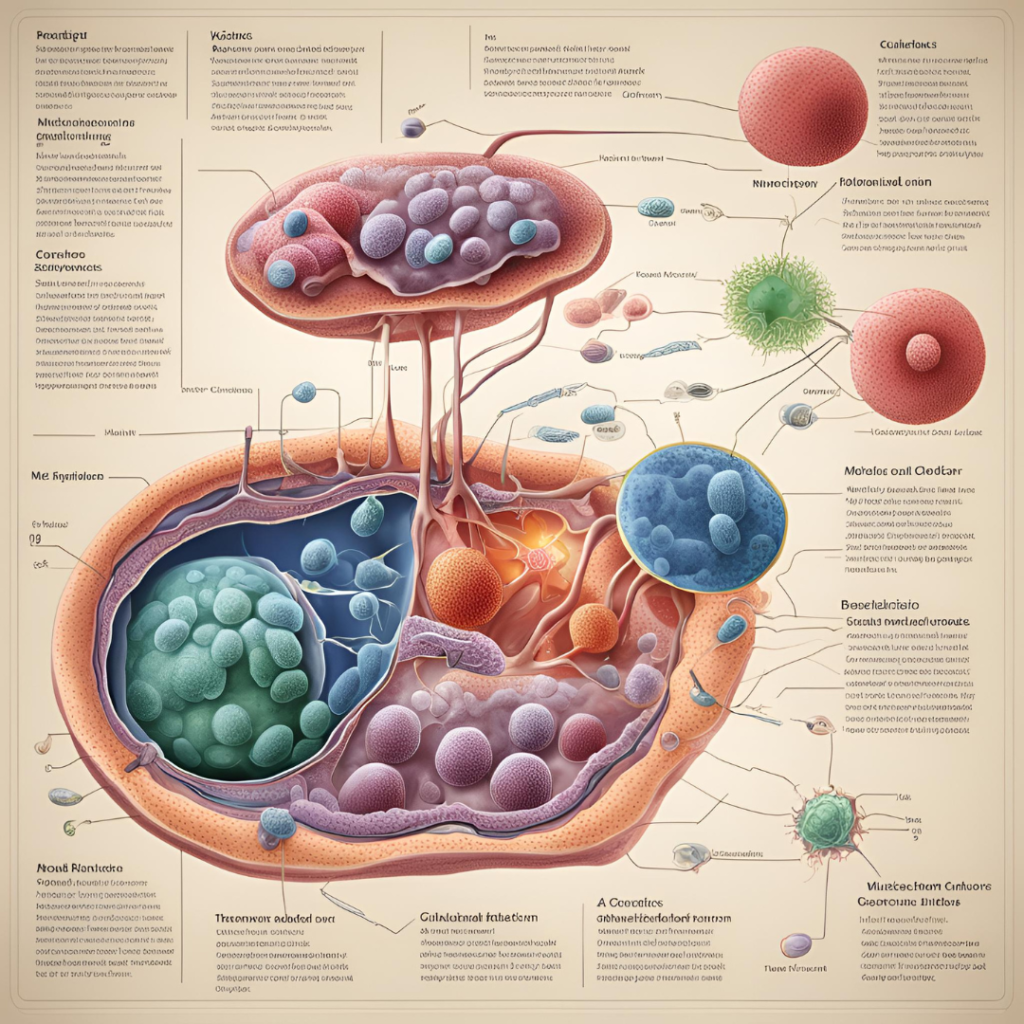Cell Structure – ACT Science Section
Cell structure is one of the topics you need to know before having ACT, especially science section. Cell biology is a branch of biology that studies the structure, function, and behavior of cells – the basic units of life. Here are some key points about cell biology:
Cell Structure: Cells have a variety of structures based on their function. Common structures include the cell membrane, nucleus, cytoplasm, organelles like mitochondria and endoplasmic reticulum, and the cytoskeleton.
Cell Function: Cells perform various functions such as energy production, protein synthesis, waste elimination, and cell division. Each organelle within a cell has a specific function that contributes to the overall operation of the cell.
Cell Communication: Cells communicate with each other through signaling pathways. This communication is crucial for coordinating processes within tissues and organs.
Cell Division: Cells can divide through processes like mitosis and meiosis. Mitosis leads to the production of two identical daughter cells, while meiosis is involved in the formation of gametes.
Cell Cycle: The cell cycle is the series of events that take place in a cell leading to its division and duplication. It consists of interphase, mitosis, and cytokinesis.
Cellular Respiration: Cells generate energy through processes like aerobic respiration (in the presence of oxygen) and anaerobic respiration (without oxygen).
Cell Differentiation: Cells differentiate into specialized cell types during development. This process allows cells to carry out specific functions within an organism.
Cell Organization: Cells can organize into tissues, organs, and organ systems in multicellular organisms. Each cell type plays a specific role within the larger organism.
Cell Death: Cells can undergo programmed cell death (apoptosis) to maintain the health and balance of tissues. Uncontrolled cell death can lead to diseases like cancer.
Cellular Diversity: Cells come in various shapes and sizes, ranging from simple prokaryotic cells to complex eukaryotic cells found in plants, animals, fungi, and protists.
In the ACT Science section, questions related to cell biology can test your understanding of basic biological concepts and your ability to interpret graphs, tables, and experimental data. Here are some examples of cell biology questions you might encounter on the ACT Science section:
Cell structure questions in ACT science
Question Type: Data Interpretation
Scenario: A scientist is studying the effect of different concentrations of a drug on cell growth. The table below shows the results of the experiment.
| Drug Concentration (%) | Cell Growth Rate (mm/day) |
| 0 | 2.5 |
| 1 | 3.0 |
| 2 | 3.5 |
| 3 | 4.o |
Question: Based on the data provided, what is the relationship between drug concentration and cell growth rate?
There is a positive correlation between drug concentration and cell growth rate.
Explanation:
As the drug concentration increases, the cell growth rate also increases. This is evident from the data in the table. For example, when the drug concentration is 0%, the cell growth rate is 2.5 mm/day. However, when the drug concentration is 3%, the cell growth rate increases to 4.0 mm/day. This consistent increase in cell growth rate with increasing drug concentration indicates a positive correlation between the two variables.
In simpler terms, the more drug you add, the faster the cells grow.
- What is the independent variable in this experiment? (Answer: Drug concentration)
- What is the dependent variable in this experiment? (Answer: Cell growth rate)
- What is the control group in this experiment? (Answer: The group with 0% drug concentration)
- What are some potential confounding variables that could affect the results of this experiment? (Possible answers: temperature, pH, cell type, drug purity)
Question Type: Experimental Design
Scenario: A biologist wants to investigate the effect of temperature on the rate of enzyme activity within cells. Which of the following experimental setups would be most suitable for this investigation?
Answer: The data suggests that there is a positive correlation between drug concentration and cell growth rate. As the concentration of the drug increases, the cell growth rate also increases. This trend indicates that the drug may be stimulating cell growth at higher concentrations.
Question: Which experimental setup best allows the scientist to determine the effect of temperature on enzyme activity within cells?
Answer: The data suggests that there is a positive correlation between drug concentration and cell growth rate. As the concentration of the drug increases, the cell growth rate also increases. This trend indicates that the drug may be stimulating cell growth at higher concentrations.
Question Type: Conceptual Understanding
Scenario: A student is studying the structure of a plant cell. Which organelle is responsible for photosynthesis in plant cells?
Question: In a plant cell, which organelle is primarily responsible for the process of photosynthesis?
Answer: The organelle responsible for photosynthesis in plant cells is the chloroplast. Chloroplasts contain chlorophyll, the pigment that captures light energy for photosynthesis.
Question Type: Inference
Scenario: A researcher is studying the effects of a new drug on cancer cells. The data shows that the drug inhibits cell division in cancer cells without affecting normal cells.
Question: Based on the results of the study, what can be inferred about the mechanism of action of the new drug on cancer cells?
The inference drawn from this study is that the new drug likely targets a specific aspect of cell division that is more pronounced in cancer cells compared to normal cells. This targeted action inhibits cancer cell division while sparing normal cells.
Question Type: Comparison
Scenario: Two different cell types, A and B, are observed under a microscope. Cell type A has a well-defined nucleus and numerous mitochondria, while cell type B lacks a nucleus but contains chloroplasts.
Question: Compare and contrast the characteristics of cell type A and cell type B based on the information provided.
Cell Type A has a well-defined nucleus and numerous mitochondria, indicating it is likely an animal cell.
Cell Type B lacks a nucleus but contains chloroplasts, suggesting it is a plant cell.
Both cell types have distinct organelles – A with mitochondria for energy production and B with chloroplasts for photosynthesis.
Cell type A is likely involved in processes requiring a lot of energy production, while cell type B is specialized for photosynthetic activities. These types of questions require you to apply your knowledge of cell biology concepts, data interpretation skills, and critical thinking abilities. Practice with similar questions and familiarize yourself with common biological terms and experimental techniques to improve your performance on the ACT Science section.

